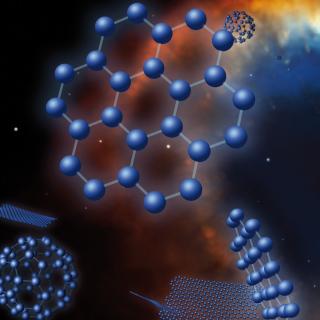Bibcode
Jönsson, Henrik; Holtzman, Jon A.; Allende Prieto, Carlos; Cunha, Katia; García-Hernández, D. A.; Hasselquist, Sten; Masseron, Thomas; Osorio, Yeisson; Shetrone, Matthew; Smith, Verne; Stringfellow, Guy S.; Bizyaev, Dmitry; Edvardsson, Bengt; Majewski, Steven R.; Mészáros, Szabolcs; Souto, Diogo; Zamora, Olga; Beaton, Rachael L.; Bovy, Jo; Donor, John; Pinsonneault, Marc H.; Poovelil, Vijith Jacob; Sobeck, Jennifer
Bibliographical reference
The Astronomical Journal
Advertised on:
9
2020
Citations
407
Refereed citations
372
Description
The spectral analysis and data products in Data Release 16 (DR16; 2019 December) from the high-resolution near-infrared Apache Point Observatory Galactic Evolution Experiment (APOGEE)-2/Sloan Digital Sky Survey (SDSS)-IV survey are described. Compared to the previous APOGEE data release (DR14; 2017 July), APOGEE DR16 includes about 200,000 new stellar spectra, of which 100,000 are from a new southern APOGEE instrument mounted on the 2.5 m du Pont telescope at Las Campanas Observatory in Chile. DR16 includes all data taken up to 2018 August, including data released in previous data releases. All of the data have been re-reduced and re-analyzed using the latest pipelines, resulting in a total of 473,307 spectra of 437,445 stars. Changes to the analysis methods for this release include, but are not limited to, the use of MARCS model atmospheres for calculation of the entire main grid of synthetic spectra used in the analysis, a new method for filling "holes" in the grids due to unconverged model atmospheres, and a new scheme for continuum normalization. Abundances of the neutron-capture element Ce are included for the first time. A new scheme for estimating uncertainties of the derived quantities using stars with multiple observations has been applied, and calibrated values of surface gravities for dwarf stars are now supplied. Compared to DR14, the radial velocities derived for this release more closely match those in the Gaia DR2 database, and a clear improvement in the spectral analysis of the coolest giants can be seen. The reduced spectra as well as the result of the analysis can be downloaded using links provided on the SDSS DR16 web page.
Related projects

Nucleosynthesis and molecular processes in the late stages of Stellar Evolution
Low- to intermediate-mass (M < 8 solar masses, Ms) stars represent the majority of stars in the Cosmos. They finish their lives on the Asymptotic Giant Branch (AGB) - just before they form planetary nebulae (PNe) - where they experience complex nucleosynthetic and molecular processes. AGB stars are important contributors to the enrichment of the
Domingo Aníbal
García Hernández

Chemical Abundances in Stars
Stellar spectroscopy allows us to determine the properties and chemical compositions of stars. From this information for stars of different ages in the Milky Way, it is possible to reconstruct the chemical evolution of the Galaxy, as well as the origin of the elements heavier than boron, created mainly in stellar interiors. It is also possible to
Carlos
Allende Prieto